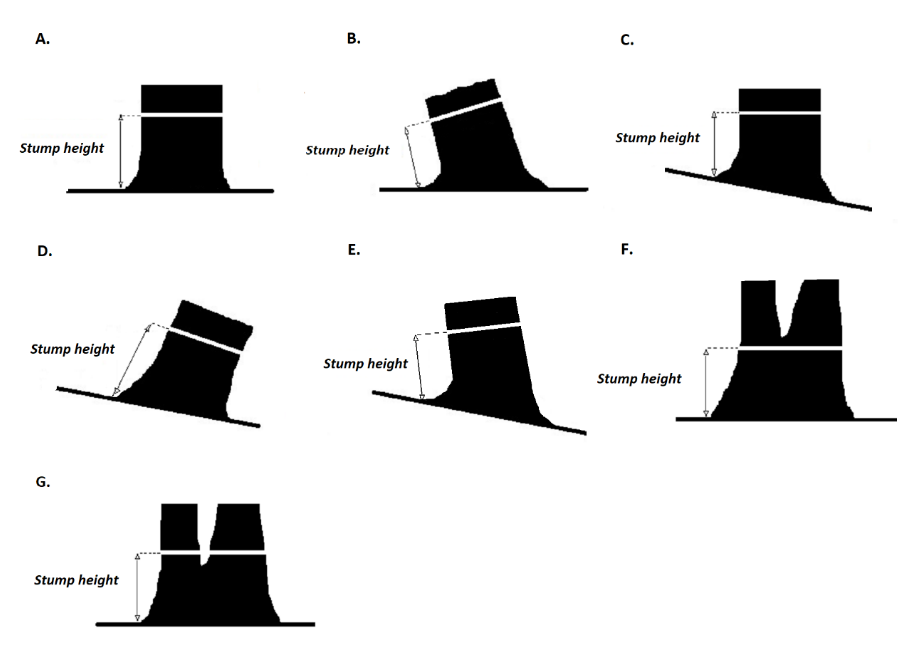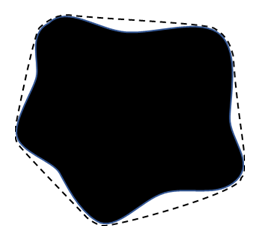Measuring diameter at stump height over bark (DSHOB) as defined in the Coastal IFOA
This page explains the measurement of diameter at stump height over bark (DSHOB) as defined in the Coastal Integrated Forestry Operations Approval (IFOA).
Determining stump height
The figure below shows standard points of stump height measurement.

Some important considerations and precautions in determining stump height are:
- Stump height is measured 30 centimetres above the ground level.
- Where a tree stump is less than 30 centimetres high, the highest point of the tree stump is taken as stump height.
- Ground level is the top of the soil and excludes loose leaf litter that is not incorporated into the soil. Before measuring stump height, clear loose leaves and litter away to establish ground level.
- If there is unevenness in the ground surface at the point of measurement, measure from the highest ground level.
- On level ground:
- If a tree or tree stump is vertical, stump height is measured from the highest ground level around the base of the tree or tree stump. Refer to figure 1A.
- If a tree or tree stump is leaning, stump height is measured on the underside of the trunk (the side the tree or tree stump is leaning to). Refer to figure 1B.
- On sloping ground stump height is measured on the upslope side of the tree or tree stump regardless of whether it is vertical or leaning. Refer to figures 1C, 1D and 1E.
- If a tree or tree stump forks at or above stump height it is considered to be a single tree. Refer to figure 1F.
- If a tree or tree stump forks below stump height the forked stems are considered to be separate trees. Refer to figure 1G.
Measure diameter at stump height over bark (DSHOB)
 To measure diameter at stump height over bark (DSHOB) use a diameter tape. Wrap the diameter tape around the tree or tree stump at stump height, making sure the tape is at right angles (90⁰) to the axis of the tree at stump height.
To measure diameter at stump height over bark (DSHOB) use a diameter tape. Wrap the diameter tape around the tree or tree stump at stump height, making sure the tape is at right angles (90⁰) to the axis of the tree at stump height.
Read the diameter measurement where the tape overlaps with the zero marker, rounded down to the nearest centimetre as shown by the graduations on the diameter tape.
Some trees exhibit a degree of buttressing at stump height. Measurement of diameter at stump height using a diameter tape consistent with the definition of diameter at stump height over bark does not require accounting for the effect of buttressing on cross-sectional area or circumference of a tree or tree stump. The position of the diameter tape held taut around a tree or tree stump cross-section with buttressing is depicted by the dotted line in the diagram.
Tools
The Coastal IFOA refers to the use of a diameter tape. A forestry specific diameter tape is not a standard tape measure. Do not use a standard tape measure to measure DSHOB.

